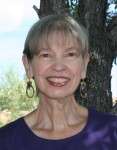by Joycelyn Campbell
 Autobiographical memory is a factor in almost every genre of writing, including fiction, memoir, poetry, history, and journalism. So it’s important to understand how autobiographical memory actually works and how reliable it is—or isn’t.
Autobiographical memory is a factor in almost every genre of writing, including fiction, memoir, poetry, history, and journalism. So it’s important to understand how autobiographical memory actually works and how reliable it is—or isn’t.
The scientists are telling us that memory is a reconstruction, and yet we, as people, tend to stick to our old-fashioned ideas that memory works like a video camera, for example, that it just records, and it files things away in mental DVDs that we can pull down and set playing. And in a way, that’s not surprising, because we see memories as foundational for who we are. We commonly feel that we are our memories; our memories define us. So something needs to change. … Accepting that memories are not literal representations of the past as it happened doesn’t mean that we have to forget about them or start disbelieving them all. But they’re shaped by who we are now. They’re shaped by what we feel, what we believe, what our biases are. (Charles Fernyhough, Pieces of Light)
According to neuroscientist Karim Nadar, it may be impossible to bring a memory to mind without altering it in some way. Memories we replay mentally over and over or talk about a lot with others are especially susceptible to such alterations. And when you retell it, the memory becomes plastic, and whatever is present around you in the environment can interfere with the original content of the memory.
What we now know is that our brains happily reconstruct memories, though we are frequently fooled into thinking that the reconstructions are seamlessly recorded recollections. … Even for the sharper memories born from strong emotions (often called flashbulb memories), time erodes the infrastructure, leaving cracks and gaps. Instead of remembering specific, perfectly accurate details, what constitutes memory over time are general impressions of events with spotty details—and the older we get, the spottier they become. (Daniel Kahneman, Thinking, Fast and Slow)
There is more than one way to lay down a memory. We’re not talking about a memory of different events, but multiple memories of the same event—as though two journalists with different personalities were jotting down notes about a single unfolding story. … The conviction that memory is one thing is an illusion. (David Eagleman, Incognito)
The world is made of stories, not of atoms.
So said poet Muriel Rukeyser. And she was correct. The world of atoms is composed of facts, details, events, objects, phenomena, information, etc. In the world of atoms, things happen (events take place).
The world of stories consists of our perceptions and interpretations of what happened, as well as the meaning we assign to it.
The things that happen to, or around, us and our stories or explanations about those things are not the same thing. But because of the speed with which our unconscious brain processes information—and the fact that we’re not aware of what it’s doing—we think that our story about what happened is what happened.
It usually goes like this:
- Something happens.
- We pay attention to selected aspects of what happens. How do we decide what to pay attention to? For the most part, our unconscious makes that decision for us, based on the model of the world it maintains.
- We miss most of it! We’re not capable of consciously perceiving everything that is going on around us. Our unconscious can process around 11,000,000 bits of information at a time compared to the 40 bits we can process consciously. There’s an amazing amount of filtering going on every single moment.
- We come up with an explanation for the parts we paid attention to. We have an inner interpreter/narrator whose job it is to maintain an ongoing narrative of our lives, creating order out of chaos, making cause-and-effect connections, and generally leading us to believe we understand what’s going on. Our inner narrator is a great confabulator. If it doesn’t have all the information, it will make something up. We will almost always believe what it tells us, and we can’t stop ourselves from interpreting or explaining.
- A set of brain circuits—usually brilliant, sometimes buffoonish—force narrative structure on the chaos of our lives. Our minds constantly struggle to extract meaning from the data rivering through our senses. … In the same way that your mind sees an abstract pattern and resolves it into a face, your imagination sees a pattern of events and resolves it into a story. If there is no story there, we are only too happy to invent one. (Jonathan Gottschall, The Storytelling Animal)
- We assign meaning to our explanation of what we paid attention to or noticed. We decide the meaning of things. And we can’t stop ourselves from making meaning.
- After the fact, we have a memory of what happened, which is really a memory of our fragmentary perception overlaid by our explanation and the meaning we attached to it. This is not a memory of what actually happened in the world of atoms. Our memory tells us stories. So what we get to keep from our experience is a story. The kinds of memories that make the best stories—and the easiest ones to recall—are of events that had a strong emotional impact.
- Each time we tell the story (to ourselves or others), we edit it. Talking and/or writing about an experience interferes with our memory of it. We remember not what we have experienced but what we have said about what we experienced. Usually the editing is unintentional, but if you pay attention, you can catch yourself in the act of editing to suit your audience, your purpose in telling the story, the impression you’re trying to make, or even your mood.
- We have a tendency to reshape the irregular features of our world into smoother, more symmetrical forms. Inconvenient details tend to be pruned from our memories, and facts that do not fit together in a coherent way tend to be forgotten, deemphasized, or reinterpreted. The process of retelling a story in our own narrative style places certain constraints on what we recall, and these constraints guide our reconstruction of events. (Joseph T. Hallinan, Why We Make Mistakes) Essentially, we edit the stories of our lives the same way we edit our writing; the only difference is that when we edit our writing, we’re doing it on purpose.
- What we are left with is the latest version of our altered recollection (and selected perception) of something that happened and what it means to us.
Everyone always has a point of view, in real life as well as in stories. We—and our characters—can’t help but view the world subjectively since everything that happens, happens to us. When you’re writing a story from a character’s point of view (POV), you include only what that character is aware of. But unless you’re a really bad writer, you don’t include random bits of information just because you find them interesting or because you discovered them in the course of your research. You edit those out.
Your POV character acts, reacts, and interprets events based on his or her model of the world the same as we do in real life. No one is a completely reliable narrator because we are all selectively paying attention to—or screening out—various things, interpreting what we pay attention to, creating cause-and-effect explanations, and assigning meaning.
Furthermore, our experiences modify the lens through which we view our entire past, present, and future, and like any lens, our worldview lens shapes and distorts what we see. The way we—and our characters—change is by altering the way in which we view the world.
Given the manner in which autobiographical memory works, it’s clear that there can be no such thing as a true story, whether the story in question is entirely made up or is based on actual events. A story can be more or less “truthy,” but it can never be absolutely accurate and true.
 Joycelyn Campbell is a writer, teacher, and self-styled metacognition specialist (for lack of a better word). Through Farther to Go! she helps people discover what they really want in life and how to use their brain—and narrative structure—to get more of what they want and less of what they don’t want. She also facilitates Monthly Meetings of the Mind (& Brain) at North Domingo Baca Multigenerational Center in Albuquerque. Find out more at farthertogo.com.
Joycelyn Campbell is a writer, teacher, and self-styled metacognition specialist (for lack of a better word). Through Farther to Go! she helps people discover what they really want in life and how to use their brain—and narrative structure—to get more of what they want and less of what they don’t want. She also facilitates Monthly Meetings of the Mind (& Brain) at North Domingo Baca Multigenerational Center in Albuquerque. Find out more at farthertogo.com.


























Leave a Reply